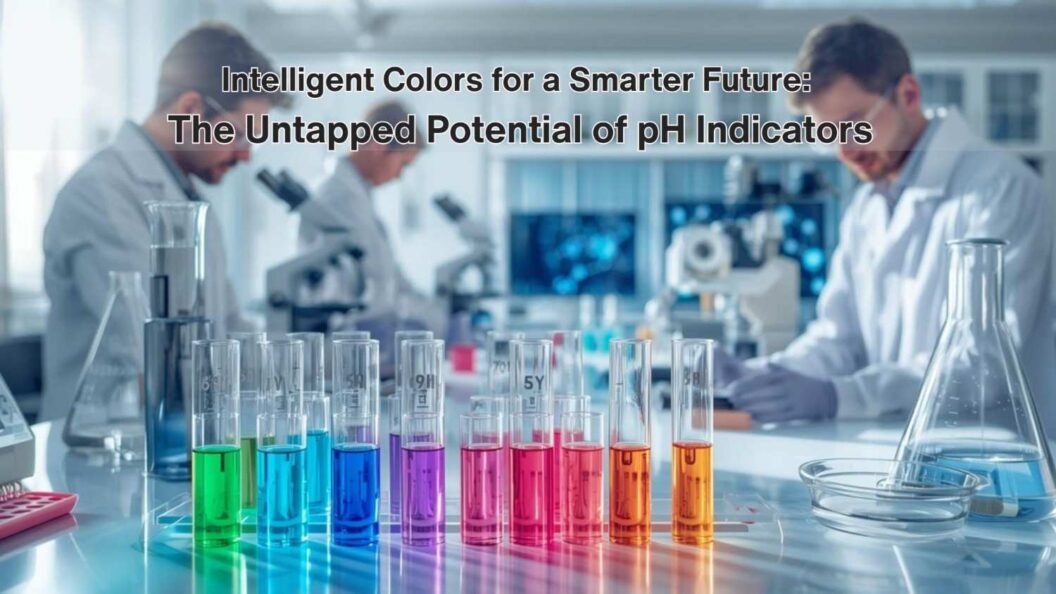In the world of chemistry, few substances are as simple yet as fascinating as pH indicators. Traditionally used to identify acidity or alkalinity, these color-changing compounds have long been confined to laboratory experiments and basic chemical education. But today, the story is changing.
With the rise of smart materials, sustainability initiatives, and advanced sensing technologies, pH indicators are emerging as vital components in everything from healthcare diagnostics to environmental monitoring and even smart textiles.
Companies like GSP Chem, a trusted name in chemical reagents and indicators, are at the forefront of this transformation, delivering high-purity indicators that bridge innovation, precision, and sustainability.
This blog explores the untapped potential of pH indicators, demonstrating how these “intelligent colors” are contributing to a smarter, safer, and more sustainable future.
Understanding pH Indicators: The Basics Behind the Color
A pH indicator is a chemical compound that changes color depending on the hydrogen ion concentration (pH) of a solution.
When the pH level shifts, the molecular structure of the indicator changes, altering the wavelengths of light it absorbs and reflects and thus, its color.
Common examples include:
- Phenolphthalein – Colorless in acidic solution and pink in basic solution.
- Methyl Orange – Red in acidic solution and yellow in basic solution.
- Bromothymol Blue – Yellow in acid and blue in base.
- Thymolphthalein – Colorless in acid and blue in base.
Historically, these indicators were used primarily for titrations and classroom demonstrations; however, modern science has discovered new ways to utilize their responsive nature beyond the laboratory.
From Traditional Chemistry to Smart Innovation
The world has moved from analog to digital, and chemistry is no exception. pH indicators are no longer just passive compounds; they are now being engineered into smart, responsive systems that interact with their environment.
1. Environmental Monitoring
pH indicators are increasingly used to detect pollution, contamination, and water quality in real time. Smart sensor systems embedded with color-changing indicators can signal changes in pH that indicate harmful chemical leaks, acid rain, or soil degradation.
For example:
- Smart patches with bromocresol green or phenol red can detect pH fluctuations in soil for agriculture.
- Portable testing kits powered by colorimetric indicators allow on-site water quality testing without sophisticated instruments.
This evolution makes pH indicators an essential tool for sustainable and eco-friendly monitoring solutions.
2. Healthcare and Biomedical Applications
In healthcare, pH changes often indicate metabolic activity or disease progression, making indicators valuable for diagnostics.
Today, researchers are integrating pH-sensitive dyes into:
- Smart bandages that change color in response to infection.
- Drug delivery systems that release medicine at specific pH levels within the body.
- Diagnostic strips for rapid disease testing.
For instance, a wound dressing containing bromophenol blue can visually indicate infection by shifting color due to local pH changes. This not only enhances patient care but also reduces the need for invasive checks.
GSP Chem’s line of biological and analytical-grade indicators contributes to such medical innovations, ensuring purity and reliability where precision is critical.
3. Smart Packaging for Food Safety
Food spoilage is often accompanied by a drop or rise in pH levels. Smart packaging infused with natural pH indicators offers an intuitive solution: it changes color when food begins to spoil.
Indicators like anthocyanins (from natural sources) or synthetic options such as methyl red are embedded into packaging films, providing visual freshness cues to consumers.
This approach reduces food waste and improves transparency in supply chains, key steps toward sustainability.
4. Advanced Textiles and Wearables
Imagine wearing a shirt that can monitor your body’s sweat pH to assess hydration or fatigue. Sounds futuristic? It’s already happening.
Researchers are developing smart fabrics coated with pH indicators that react to sweat composition.
These textiles can:
- Detect dehydration or metabolic imbalances.
- Serve as biosensors for athletes and healthcare monitoring.
As the demand for wearable technology grows, pH indicators are becoming central to this fusion of chemistry, electronics, and design.
5. Industrial and Manufacturing Applications
In chemical manufacturing, maintaining the correct pH is essential for product quality and safety.
pH indicators are used in:
- Process control systems for continuous monitoring.
- Corrosion detection in pipelines and storage tanks.
- Safety sensors that detect chemical spills or leaks.
GSP Chem’s range of reliable indicators, such as Bromocresol Green, Phenol Red, and Thymolphthalein, ensures consistent results across diverse industrial applications, making them indispensable tools in modern manufacturing ecosystems.
The Role of Sustainability in Indicator Development
One of the most promising directions in this field is the move toward eco-friendly, biodegradable indicators.
Traditional synthetic indicators, though effective, can contain toxic or non-degradable components. Today, research is focused on developing green alternatives derived from:
- Natural pigments like turmeric, beetroot, and hibiscus.
- Bio-based materials that reduce chemical waste.
These sustainable indicators not only minimize environmental impact but also align with the global movement toward green chemistry, an approach that GSP Chem strongly supports through its innovation-driven manufacturing practices.
The GSP Chem Advantage: Precision Meets Progress
As one of India’s leading chemical reagent suppliers, GSP Chem plays a pivotal role in delivering the tools that power innovation. The company’s expertise lies in providing high-purity, lab-tested pH indicators that meet international standards and support modern research, manufacturing, and diagnostic needs.
Why GSP Chem Stands Out:
- Quality Assurance – Every product undergoes rigorous quality checks for consistency and accuracy.
- Wide Product Range – From Methyl Orange to Bromophenol Blue, GSP Chem supplies indicators for academic, industrial, and research use.
- Innovation Support – The company partners with research institutions and industries to explore new-age applications of indicators.
- Sustainability Commitment – GSP Chem emphasizes eco-conscious practices in sourcing, formulation, and packaging.
Through innovation and reliability, GSP Chem ensures that its indicators serve not just chemical reactions, but real-world progress.
Conclusion
The humble pH indicator has evolved from a simple color-changing reagent to a powerful symbol of innovation. Its ability to sense, respond, and communicate environmental changes makes it an integral part of the next generation of smart and sustainable technologies.
From healthcare and environmental science to food packaging and industrial safety, these “intelligent colors” are guiding industries toward a smarter and greener future.








